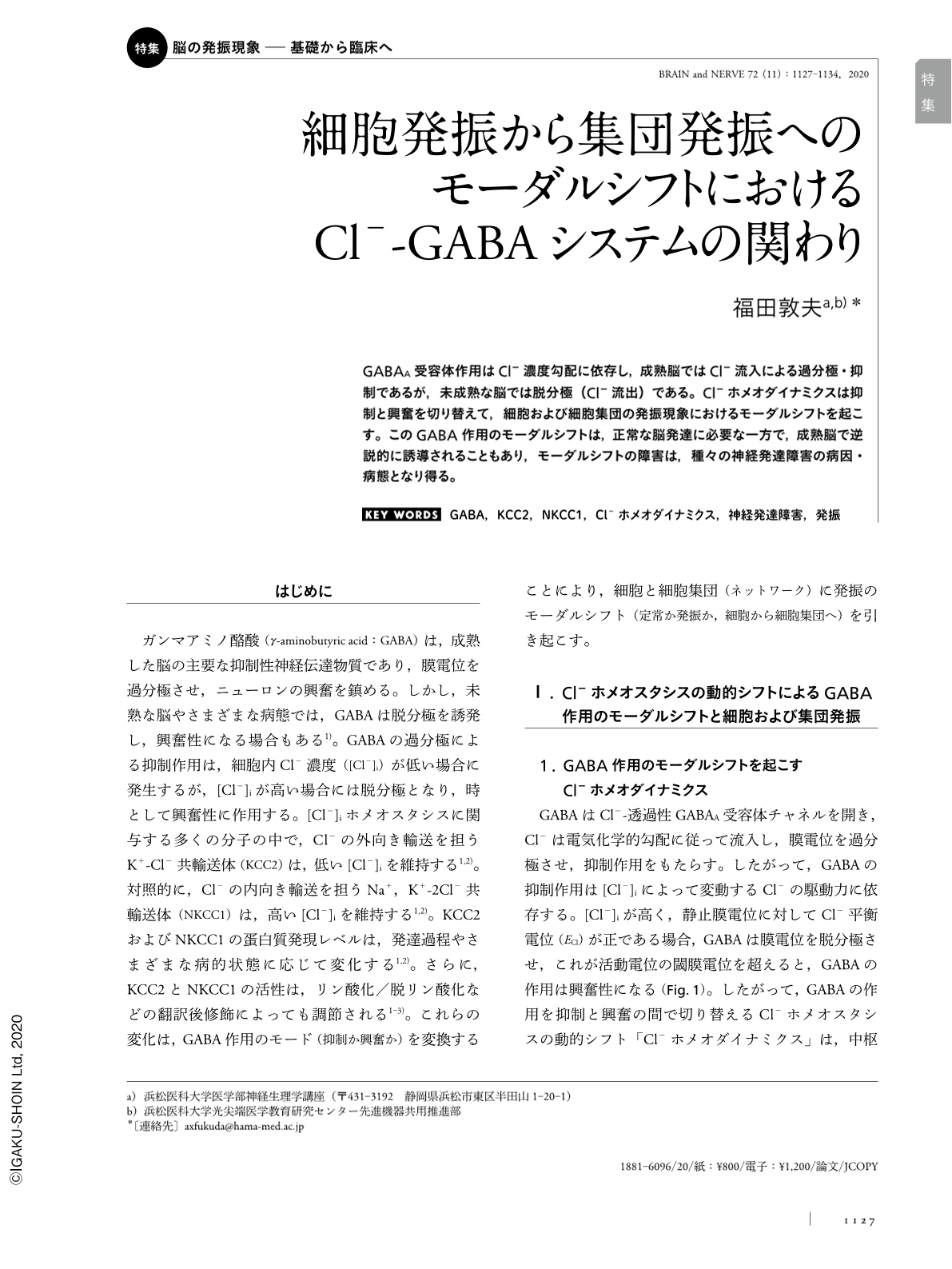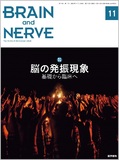Japanese
English
- 有料閲覧
- Abstract 文献概要
- 1ページ目 Look Inside
- 参考文献 Reference
GABAA受容体作用はCl-濃度勾配に依存し,成熟脳ではCl-流入による過分極・抑制であるが,未成熟な脳では脱分極(Cl-流出)である。Cl-ホメオダイナミクスは抑制と興奮を切り替えて,細胞および細胞集団の発振現象におけるモーダルシフトを起こす。このGABA作用のモーダルシフトは,正常な脳発達に必要な一方で,成熟脳で逆説的に誘導されることもあり,モーダルシフトの障害は,種々の神経発達障害の病因・病態となり得る。
Abstract
Gamma-aminobutyric acid (GABA) generally induces hyperpolarization and inhibition in the adult brain, but causes depolarization (and can be excitatory) in the immature brain. Because GABAA receptors are Cl- channels, alternating GABA actions between hyperpolarization (Cl- influx) and depolarization (Cl- efflux) are induced by changes in the Cl- gradient, which is regulated by Cl- transporters. Thus, the dynamics of neural functions are modulated by “active” Cl- homeostasis (Cl- homeodynamics), alternating inhibition and excitation, and could be the underlying mechanism of modal shifts in cellular and network oscillations. An ontogenic modal shift in GABA actions is required for normal development, but an aversive reverse modal shift in adults could occur occasionally. Thus any disturbance in this ordinal developmental GABA modal shift, resulting in an abnormal temporal window of depolarizing (excitatory) GABA action, could be the underlying pathogenesis of diverse neurodevelopmental disorders and neurological diseases.

Copyright © 2020, Igaku-Shoin Ltd. All rights reserved.


